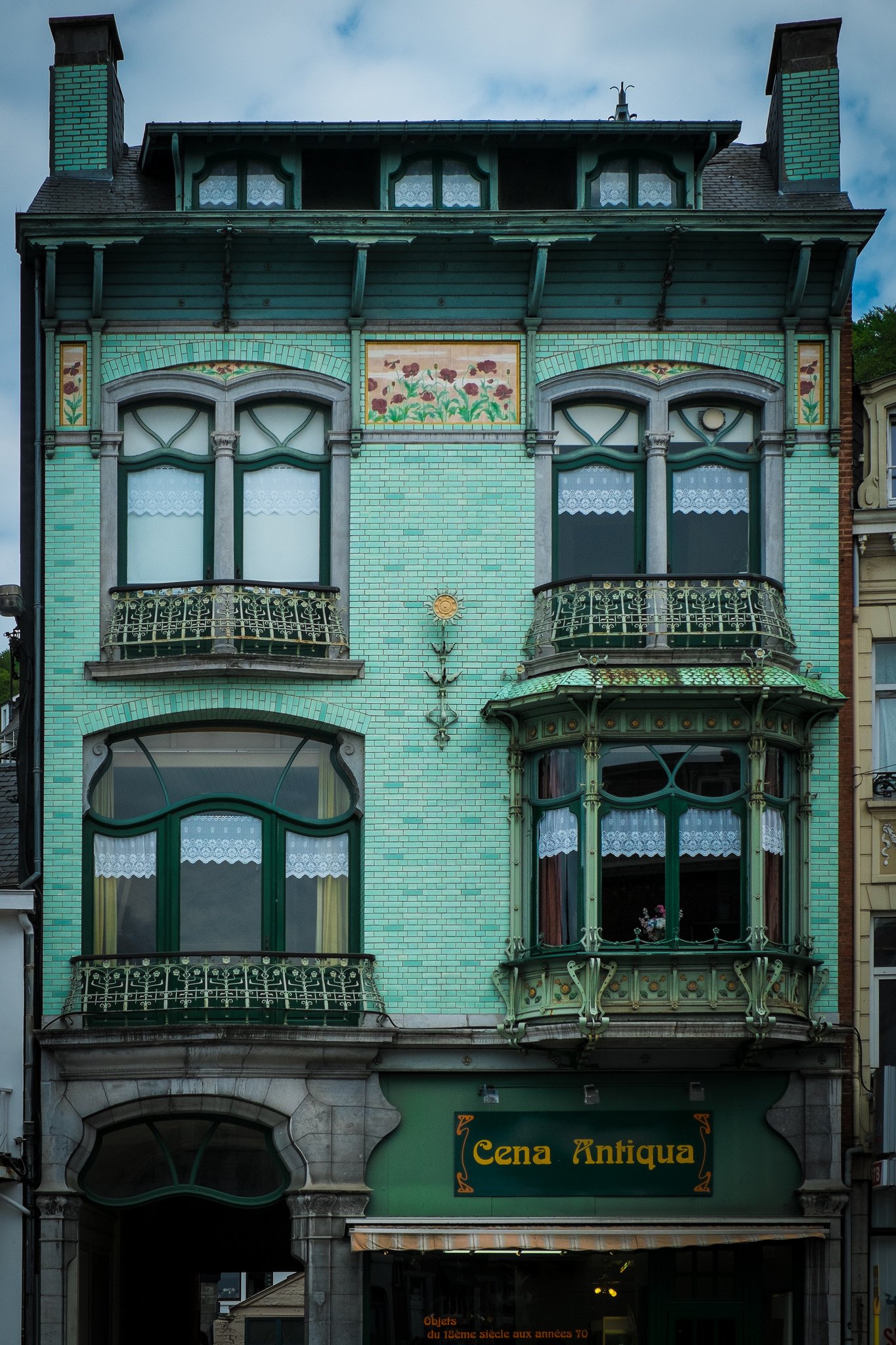#6043. Turquoise Art Nouveau Façade: Elegance of Modern Style and Decorative Luxury
Before us stands a stunning example of Art Nouveau architecture — a building with a characteristic turquoise-green brick façade that demonstrates the elegance and decorative nature of this style. The structure is a three-story building with an attic and two symmetrical chimneys clad in the same tone as the main façade.
The façade features a rich ornamental program. Particularly notable is the central decorative element — a rectangular panel depicting poppies, framed by turquoise tiles. Vertical decorative panels with floral motifs, characteristic of Art Nouveau style, are positioned on either side of the windows on the first and second floors.
The windows of the building have curvilinear outlines typical of Art Nouveau, with elegant arches and curved forms. They are complemented by intricate wrought iron balconies with plant-inspired ornamentation. Especially prominent is the corner bay window on the second floor to the right, with its richly decorated upper section and stained glass elements. White lace curtains behind the glass create a striking contrast with the vivid color of the façade.
On the ground floor, there is an establishment called "Cena Antiqua" with signage that harmonizes with the overall aesthetic of the building. The entrance is designed as an arch, supporting the overall composition. A sun symbol and other decorative elements between the floors add special character to the façade and highlight the architect's attention to detail.
This building is an excellent example of how Art Nouveau architecture sought to combine functionality with decorative arts, creating a cohesive artistic image where every detail serves the overall concept.
